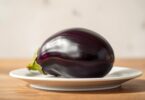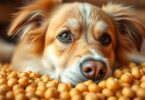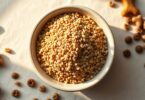Over 60% of pet owners admit they’re unsure which human foods are safe for their furry companions. This uncertainty often leads to missed opportunities to boost a pet’s diet with nutrient-packed options. Butternut squash, a vibrant fall favorite, offers surprising benefits for four-legged friends when handled properly.
Veterinary professionals like Dr. Jerry Klein emphasize that this vitamin-rich vegetable can support digestive health and immune function in pets. However, preparation matters—always remove seeds, skin, and rinds to prevent choking hazards. Steamed or baked varieties work best, served plain and in small portions.
Packed with fiber and beta-carotene, this low-calorie food helps maintain energy levels without extra pounds. Its natural sweetness often appeals to picky eaters, making it a smart addition to homemade meals or training treats. Always consult your vet before introducing new items to your pet’s menu.
This guide explores safe serving methods, portion sizes, and creative ways to incorporate this seasonal superfood into your companion’s diet. Let’s uncover how to turn an ordinary vegetable into a tail-wagging delight!
Understanding the Nutritional Benefits of Butternut Squash for Dogs
A surprising winter vegetable offers multiple health advantages for four-legged companions. Packed with essential nutrients, this orange-fleshed superfood provides more than just seasonal flavor. When prepared correctly, it becomes a powerhouse addition to balanced canine nutrition.
Essential Nutrients for Vital Functions
Rich in vitamin A and beta-carotene, this vegetable supports eye health and skin condition. The body converts beta-carotene into antioxidants that protect cells from damage. Vitamin C boosts the immune system, while potassium helps maintain proper muscle function.
Research from the Journal of Animal Science shows these nutrients work synergistically. Veterinary nutritionist Dr. Angela Witzel notes: “The combination of vitamins and minerals promotes coat shine and supports organ health.”
Gut Health and Weight Management
With 3 grams of fiber per cooked cup, this food aids digestion naturally. Soluble fiber acts as a prebiotic, feeding beneficial gut bacteria. This helps regulate bowel movements and improves nutrient absorption efficiency.
Low in calories yet high in water content, it's ideal for weight-conscious pets. Always remove the tough outer layer before serving to prevent intestinal irritation. Steamed cubes or pureed versions offer the best digestibility for sensitive stomachs.
How to Safely Add Butternut Squash to Your Dog's Diet
Introducing new ingredients to a pet's meals requires careful planning to maintain digestive harmony. Transitioning too quickly can disrupt gut balance, even with nutrient-rich options like butternut squash. A phased approach helps pets adjust while allowing owners to spot potential sensitivities.
Introducing New Foods Gradually
Start by mixing a teaspoon of cooked, mashed squash into regular meals. Observe for 48 hours for signs like loose stools or decreased appetite. If no issues arise, gradually increase portions over 7-10 days until it makes up 10% of the meal.
Always serve plain, steamed squash without seasonings or oils. The fibrous skin and seeds should be removed to prevent intestinal blockages. For smaller breeds, pureeing ensures easier digestion.
Use bite-sized roasted cubes as training rewards instead of processed treats. Limit these extras to avoid calorie overload. Veterinary nutritionists emphasize this slow integration method helps maintain stable energy levels and nutrient absorption.
Consult your veterinarian before making dietary changes, especially for pets with existing health conditions. Keep a food journal to track reactions during the transition period.
can dogs eat butternut squash: What You Need to Know
Pet parents often question how to balance nutritional benefits with food safety. Proper preparation transforms this autumn vegetable into a gut-friendly addition rather than a digestive challenge. Let’s explore critical precautions to protect your companion’s health.
Safety and Digestibility Considerations
The fibrous skin and inner seeds pose hidden dangers. These parts contain compounds that may irritate the intestinal lining or create blockage risks. Always peel thoroughly and scoop out seed clusters before cooking.
Raw varieties present particular challenges. Their tough texture makes nutrients harder to absorb and may lead to stomach discomfort. Steaming or baking softens cell walls, releasing vitamins minerals more effectively for your pet’s system.
Veterinary studies confirm cooked squash increases beta-carotene absorption by 40% compared to raw versions. This conversion supports immune function and eye health. For sensitive stomachs, start with teaspoon-sized portions mixed into regular meals.
Never serve seasoned or buttered preparations. Stick to plain preparations to avoid hidden additives. Remember: proper technique unlocks the benefits while minimizing risks for your four-legged friend.
Cooking and Serving Methods for Butternut Squash
The right cooking approach unlocks nutritional gold while keeping tails wagging safely. Simple preparation preserves vital nutrients like potassium and fiber while eliminating potential hazards. Follow these vet-approved techniques to turn this colorful vegetable into pet-friendly fuel.
Roasting, Steaming, and Boiling Techniques
Steaming maintains maximum nutrient density while softening the flesh. Cut peeled squash into half-inch pieces before steaming for 12-15 minutes. For roasting, cube and bake at 400°F until fork-tender – this caramelizes natural sugars without added fats.
Boiling works well for mash preparations. Always start with cold water and simmer until soft. These methods outperform frying by preserving heat-sensitive vitamins and avoiding oily residues that upset sensitive stomachs.
Avoiding Harmful Additives
Seasonings meant for human palates can endanger pets. Garlic, onions, and salt remain strictly off-limits. Puree cooked squash with unsalted bone broth for a nutrient-packed topper on regular meals.
Freeze small portions in silicone molds for cooling summer treats. Remember to remove seeds completely before cooking – their tough texture poses choking risks. Keep servings plain and simple to maintain digestive harmony.
Mix steamed pieces with lean proteins for homemade meals. Always introduce new foods gradually, monitoring for any adverse reactions. With proper technique, this versatile vegetable becomes a wholesome addition to balanced nutrition plans.
Portion Sizes and Feeding Guidelines
Portion control transforms nutritious ingredients into safe additions for pets. Tailoring servings to a companion's size prevents overfeeding while maximizing benefits. Let’s explore practical strategies to balance squash in meals without disrupting nutritional harmony.
Size-Based Portion Recommendations
Small breeds under 20 pounds thrive with 1-2 teaspoons of cooked squash daily. Medium-sized companions (20-50 lbs) handle up to a tablespoon. Larger pets may enjoy 2-3 tablespoons, depending on activity levels.
Always chop cooked squash into pea-sized pieces to prevent choking. Mix these portions into regular meals gradually, monitoring stool consistency. For puppies, start with half-teaspoon amounts to assess tolerance.
The 10% Calorie Rule for Treats
Veterinary guidelines recommend keeping treats under 10% of daily calorie intake. A 30-pound pet needing 600 calories daily should consume no more than 60 calories from extras like squash.
Use a kitchen scale to measure portions accurately. One ounce of cooked squash contains roughly 12 calories – adjust quantities based on your companion’s weight goals. Pair these servings with reduced kibble amounts to maintain balanced nutrition.
Track total calorie content across all foods to avoid accidental overfeeding. Consistent portioning supports healthy weight management while letting pets enjoy seasonal flavors safely.
Alternatives to Butternut Squash for a Balanced Dog Diet
Diversifying your pet's plate with colorful veggies prevents mealtime monotony while boosting wellness. Rotating produce introduces new textures and nutrients that complement traditional ingredients. This strategy helps address different health needs through natural food sources.
Other Nutrient-Packed Options
Zucchini offers hydration and vitamin C without excess calories. Its mild flavor blends well with proteins like cottage cheese in homemade recipes. Pumpkin provides soluble fiber for digestive regularity – especially useful during seasonal transitions.
Crunchy carrots act as natural toothbrushes while delivering beta-carotene. Green beans supply iron and vitamin K for bone health. Steamed versions of these vegetables retain maximum nutritional value for optimal absorption.
Creating Exciting Meal Rotations
Switching veggies weekly prevents taste fatigue and reduces allergy risks. Veterinary nutritionist Dr. Susan Thompson recommends three-week cycles to monitor tolerance. Combine different colored produce to cover various antioxidants and minerals.
Mix roasted sweet potato cubes with steamed broccoli for texture variety. Freeze blended pumpkin and yogurt into lick mats for mental stimulation. Always introduce new items in teaspoon amounts before scaling up portions.
This approach ensures pets receive comprehensive nutrition while keeping their bowls interesting. Pair vegetable rotations with regular check-ups to tailor diets to changing health needs.
Monitoring Your Dog's Health When Introducing Squash
Tracking your companion's response to dietary changes ensures both safety and nutritional success. Watch for subtle shifts in energy levels, appetite, and bathroom habits during the transition period. These observations help determine if the new addition agrees with their system.
Identifying Signs of Digestive Upset
Loose stools or increased gas often signal mild intolerance. Some pets may show reduced interest in meals or occasional vomiting. Changes in stool consistency—particularly watery or mucus-covered results—warrant immediate attention.
Make sure to monitor reactions for 3-5 days after initial introduction. Temporary adjustments like smaller portions or switching cooking methods often resolve minor stomach issues. Persistent symptoms indicate it's time to give dog a break from the vegetable.
When to Consult Your Veterinarian
Seek professional guidance if diarrhea lasts over 24 hours or vomiting occurs repeatedly. Blood in stool, extreme lethargy, or refusal to eat require urgent care. These signs could suggest allergies or blockages from improperly prepared squash.
Vets may recommend reintroducing the food later or adjusting its form. Always pair new vegetables with familiar dog food to ease digestion. Proper monitoring helps maintain stomach health while unlocking benefits like potassium and vitamin absorption.
Final Insights on Incorporating Squash into Your Dog's Diet
Pet nutrition thrives on variety, and seasonal vegetables offer exciting opportunities for health-conscious owners. When prepared thoughtfully, this vitamin-rich food supports digestive wellness and strengthens natural defenses through antioxidants like beta-carotene.
Steamed or roasted versions maximize mineral absorption while eliminating choking risks. Always remove seeds and skins before serving. Start with teaspoon portions mixed into meals, gradually increasing based on your companion’s size and tolerance.
Pair squash with lean proteins or blend into homemade treats for balanced nutrition. Monitor energy levels and stool consistency during transitions. Experts recommend keeping these additions under 10% of daily calories to maintain weight goals.
Rotate orange veggies with other safe options like pumpkin or green beans for diverse nutrient intake. Consult your veterinarian to tailor portions to specific health needs. With proper preparation and moderation, this colorful ingredient becomes a tasty ally in promoting lifelong vitality.
Remember: a mindful approach to dietary changes helps pets thrive. By combining expert guidance with attentive care, you’ll nourish both body and bond with every wholesome bite.
FAQ
Is the skin safe for pets to consume?
Remove the tough outer peel before serving, as it poses a choking hazard and contains indigestible cellulose. Always use peeled, cooked flesh for optimal digestion.
Can diabetic pets benefit from this food?
Its low glycemic index helps regulate blood sugar spikes. Consult your vet about adjusting insulin doses when adding fiber-rich squash to diabetic meal plans.










Leave a Comment